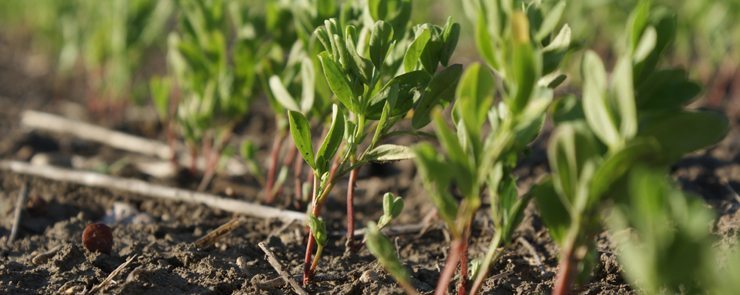Risk management tool will put pulse growers on a level playing field with traditional grain producers
U.S. pulse growers hope a new revenue based crop insurance program will help fight off the relentless competition from corn and soybeans.
After 13 years of lobbying, the sector has finally achieved crop insurance parity with cereals and oilseeds.
A four-year pilot program starting March 1 will provide pulse growers with a revenue option for their crops in key pulse producing states.
The program will be launched for peas, lentils and chickpeas in North Dakota, Montana, Washington and Idaho.
It will also be available for pinto, black, great northern and red kidney beans in North Dakota and Minnesota.
Read Also

China’s grain imports have slumped big-time
China purchased just over 20 million tonnes of wheat, corn, barley and sorghum last year, that is well below the 60 million tonnes purchased in 2021-22.
It will be available only in counties within those states that have a history of producing those crops and cover most of the states’ major production areas.
Tim McGreevy, chief executive officer of the USA Dry Pea and Lentil Council, said it will be nice for pulse growers to have both a yield and a revenue insurance option for their crops.
“Given the volatility of markets that we’ve seen in the past five or six years, there has been a move in the U.S. towards revenue type insurance to cover the price risk that producers have faced here in the past several marketing years,” he said.
McGreevy said revenue insurance levels the playing field with crops such as corn, soybeans, wheat and barley.
Dick Wittman, past chair of the council, said the previous crop insurance program left a lot to be desired.
“A common comment from growers was, ‘why buy the coverage? When you get to a loss claim situation, the fine print figures out a way to never pay,’ ” he said in a news release.
“Finally, we have a risk management tool that puts us on a more level playing field with traditional grain producers.”
Pulse crops have been losing ground to corn and soybeans, especially in North Dakota.
Growers planted 8.4 million acres of corn and soybeans in the state last year, up two million acres from five years ago.
They seeded 1.1 million acres of beans, peas and lentils, down 180,000 acres from five years ago.
McGreevy doesn’t think a pulse crop revenue insurance program will increase pea, lentil, chickpea and bean acres, but it could help prevent further erosion of pulse acres.
“Will it have a big impact on acreage in these areas? It’s not going to hurt, but I think it’s more neutral,” he said.
“It just (allows pulses) to compete with the other crops that already have it.”
Revenue insurance will work for some growers but not others. Prices farmers can insure against won’t be released until March 1, so it’s hard to compare insurance programs.
However, McGreevy expects the revenue program to be at least 15 percent more expensive than yield insurance.
He hopes the program will become a permanent fixture after the four-year trial run.
In the meantime, the immediate outlook for pulses is good because prices have been attractive with the exception of lentils.
“We expect to at least hold our acreage and probably increase our acreage from last year,” said McGreevy.
















